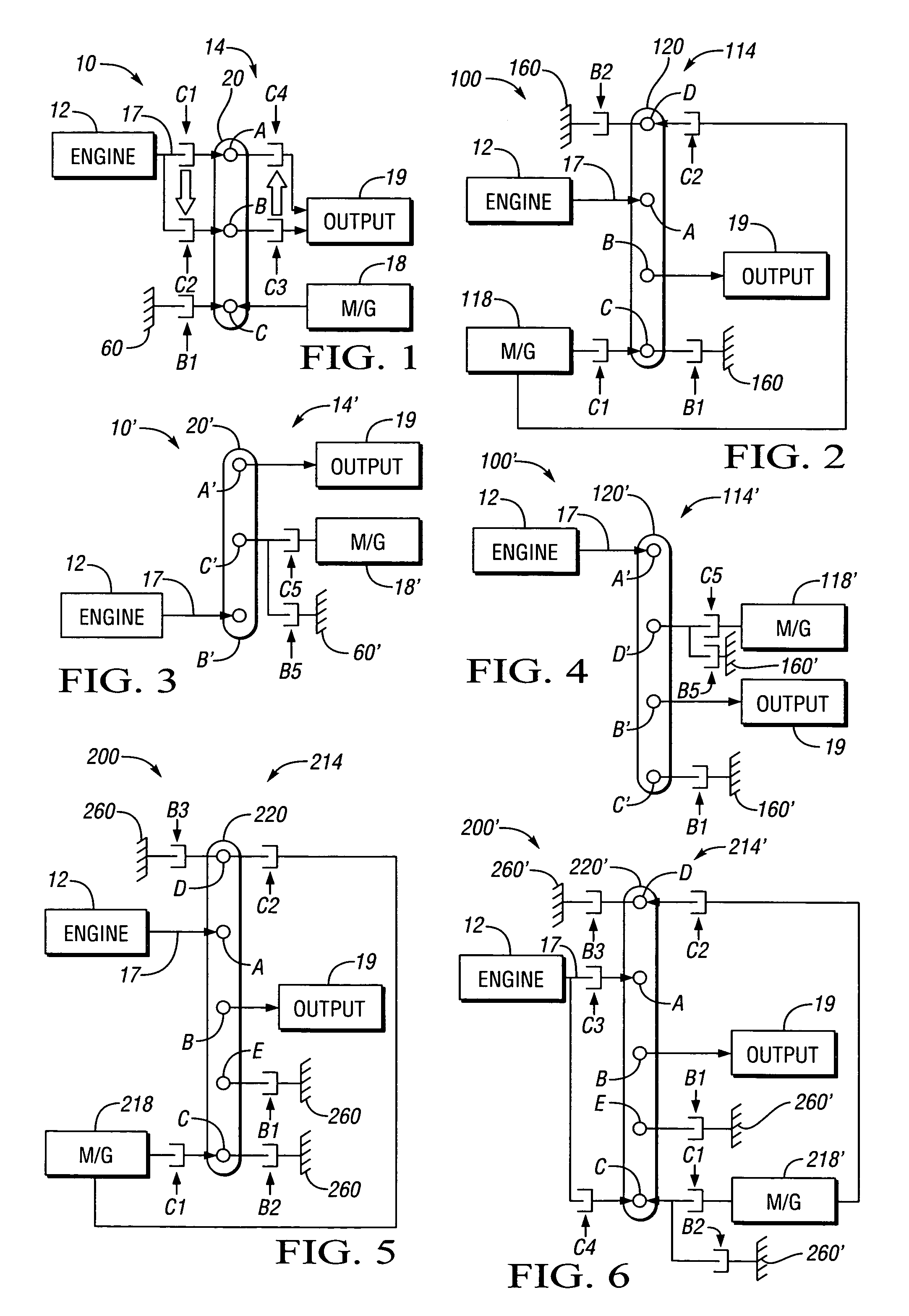Hybrid electro-mechanical transmission with single motor/generator and method of control
a technology of electro-mechanical transmission and single motor, applied in the direction of locomotive transmission, electric motor propulsion transmission, gearing, etc., can solve the problems of limited power supply, limited power reception, etc., and achieve the effects of reducing emissions, fuel economy improvement, and reducing costs
- Summary
- Abstract
- Description
- Claims
- Application Information
AI Technical Summary
Benefits of technology
Problems solved by technology
Method used
Image
Examples
Embodiment Construction
[0034]Referring to the drawings, wherein like reference numbers refer to like components, FIG. 1 shows a powertrain 10 including an engine 12 connected to one embodiment of an electro-mechanical transmission designated generally by the numeral 14. The transmission 14 is designed to receive at least a portion of its driving power from the engine 12. The engine 12 has an output shaft that is connectable to an input member 17 of the transmission 14. The input member 17 is selectively connectable to a gear set member of transmission 14 represented by a first node A of a lever 20 via a first clutch C1. The engine 12 is operatively connected to node A of the lever 20 when C1 is engaged. The lever 20 represents a simple planetary gear set, and may be referred to as such. The lever 20 includes the first node A as well as a second and third node B and C, respectively. The nodes A, B and C represent a first, second and third member of the planetary gear set 20, preferably a ring gear member, ...
PUM
 Login to View More
Login to View More Abstract
Description
Claims
Application Information
 Login to View More
Login to View More - R&D
- Intellectual Property
- Life Sciences
- Materials
- Tech Scout
- Unparalleled Data Quality
- Higher Quality Content
- 60% Fewer Hallucinations
Browse by: Latest US Patents, China's latest patents, Technical Efficacy Thesaurus, Application Domain, Technology Topic, Popular Technical Reports.
© 2025 PatSnap. All rights reserved.Legal|Privacy policy|Modern Slavery Act Transparency Statement|Sitemap|About US| Contact US: help@patsnap.com



